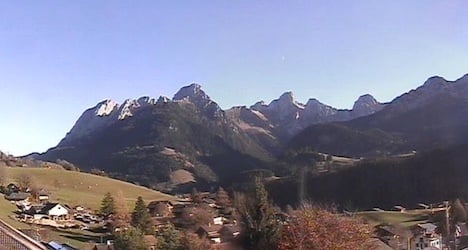Autumn has been largely dry and warmer than usual with highs of 18C in Basel on Wednesday and 17C in Geneva under sunny skies, according to MeteoSwiss, while high mountain passes have remained snow-free.
The benign weather is forecast to continue across most of the country on Thursday before the edge of the storm hits on Friday.
Heavy rain will hit most of the country accompanied by strong winds that will intensify on Saturday and Sunday when snow is forecast on the Swiss plateau for the first time this fall and in mountain regions.
Snow is not expected to linger in the valleys but temperatures will likely drop below zero on Sunday and Monday in many parts of the country, the outlook from the national weather office said.
Many Swiss mountain passes normally closed at this time of year, have stayed open because of the balmy climate.
But this week they are starting to close for the winter season.
The Gotthard road pass straddling the border of the cantons of Uri and Ticino was set to close on Wednesday at 6pm, a day after the Susten Pass, also in Uri, shut down.
The Klausen (Uri/Glarus) and Furka (Uri/Valais) passes are programmed to close on Thursday.




 Please whitelist us to continue reading.
Please whitelist us to continue reading.
Member comments